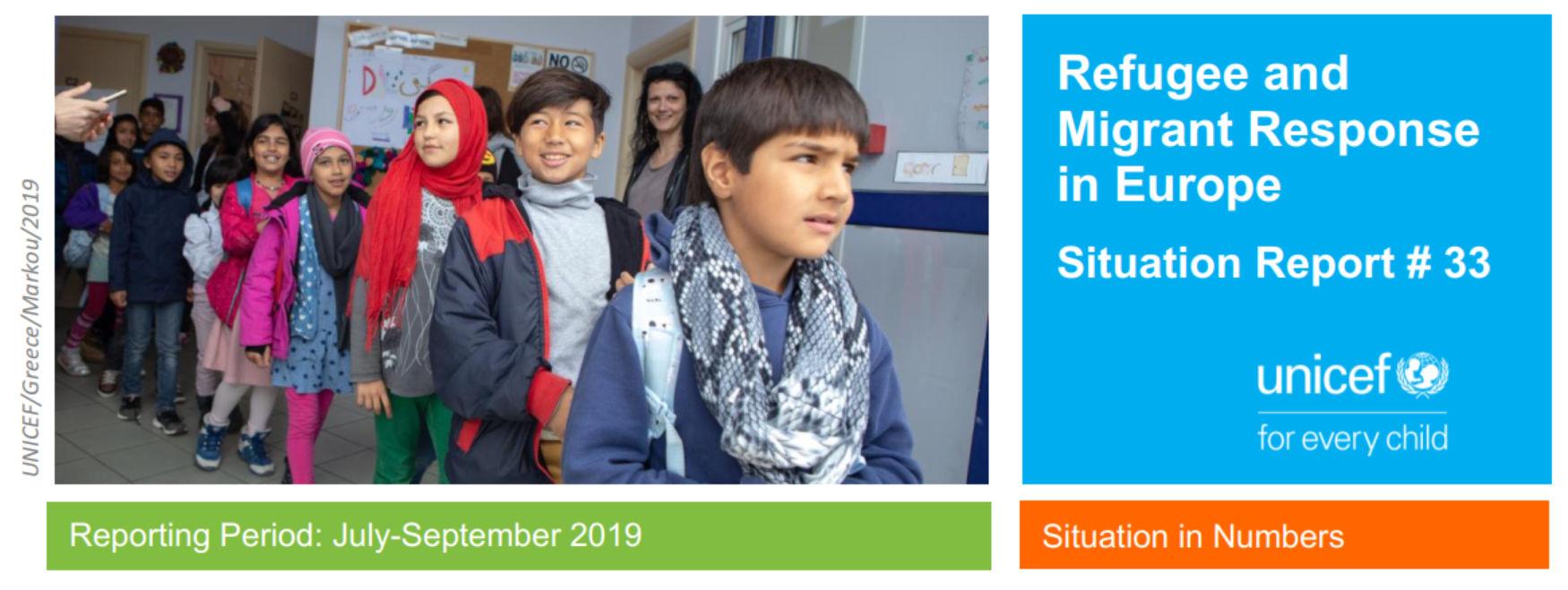
Submitted by Di Kennedy on Wed, 08/04/2020 - 10:02
Highlights
-
Although overall fewer people crossed through Mediterranean migration routes in 2019 compared to 2018, the proportion of children has increased.
Moreover, September saw a notable spike of sea crossings to both Greece and Italy, where arrivals were respectively 140 and 164 per cent higher than the same period in 2018. -
Between January and September 2019, over 18,700 children on the move were able to attend UNICEF-supported regular formal and non-formal education classes, while 13,240 were reached with psychosocial support, case management and referral. Over 4,200 unaccompanied children were also supported with community-based care, while close to 4,350 women, girls, boys and men were assisted with GBV prevention and response services.
-
To respond to the growing needs of children on the move in a context of a deteriorating situation on Greek islands, as well as in Bosnia and Herzegovina and Montenegro, during the summer UNICEF revised its humanitarian appeal.
It now stands at US$ 29.5 million. UNICEF is urgently seeking US$ 10.5 million to keep children in overcrowded facilities safe from violence and abuse and protect them from the cold winter weather.
Situation in Numbers
-
82,000 # of arrivals in Europe through Italy, Greece, Spain and Bulgaria in Jan-Sept 2019 (UNHCR, 6 October 2019)
-
19,800 Estimated # of children among all arrivals through Greece, Italy, Spain and Bulgaria in JanSept 2019. Around a third of them are girls. (UNHCR, 6 October 2019)
-
43,460 # of estimated children present in Greece, Italy, Bulgaria, Serbia, Bosnia and Herzegovina, and Montenegro (UNICEF, September 2019)
-
11,940 # of unaccompanied and separated children registered in Greece, Italy, Bulgaria, Serbia and Bosnia and Herzegovina (UNICEF, September 2019)
Full report here
